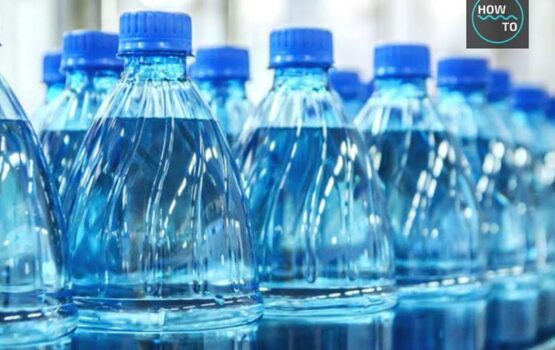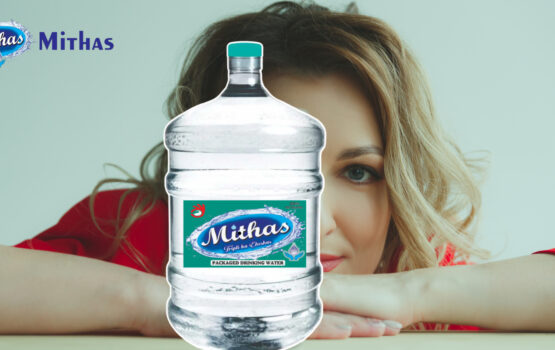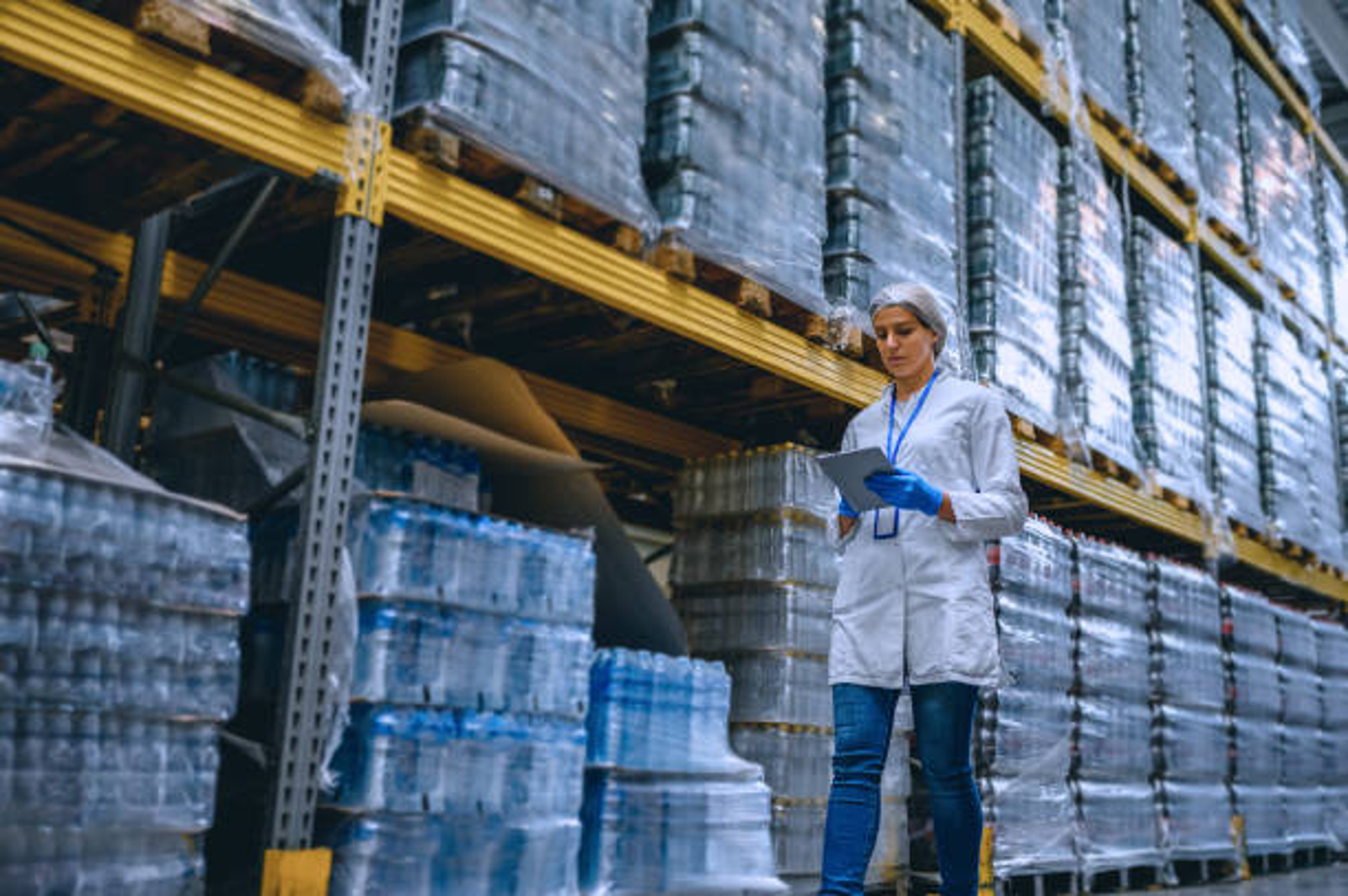The Pet Preform Blowing Machine plays a crucial role in the production process of PET (Polyethylene Terephthalate) bottles in a packaged drinking water plant. Let’s explore the step-by-step process and the role of the Pet Preform Blowing Machine:
The first step involves loading PET preforms into the machine’s preform loading system. This system securely positions the preforms into the mold cavities, ready for the blowing process.
Once the preforms are loaded, they move into the heating system. In this stage, the preforms undergo controlled heating in an oven section. The heating system ensures that the preforms reach the optimal temperature for molding, ensuring uniformity and consistency in bottle production.
After the heating process, the preforms are transferred to the stretching and blowing stations of the machine. High-pressure air is injected into the preforms, which expands and shapes them to conform to the mold design. The stretching and blowing process transforms the preforms into bottles with the desired shape, size, and neck design.
Once the bottles are formed, they move into the cooling system. This system rapidly cools the bottles to maintain their shape and integrity. The cooling process ensures that the bottles are ready for further processing and packaging. Finally, the bottles are ejected from the machine, ready for the next stage of the production line.
The Pet Preform Blowing Machine is an integral part of the packaged drinking water production process, enabling the production of high-quality bottles that preserve the purity and freshness of Mithas Packaged Drinking Water.
By utilizing advanced technology and automation, the Pet Preform Blowing Machine optimizes efficiency, reduces energy consumption, and minimizes production waste. Regular maintenance and quality control processes are implemented to ensure the machine’s performance and adherence to stringent standards, guaranteeing the integrity of the final product.
The Pet Preform Blowing Machine is an integral part of the packaged drinking water production process, enabling the production of high-quality bottles that preserve the purity and freshness of Mithas Packaged Drinking Water.




The Automated Rinsing, Filling, and Capping (RFC) Machine is a crucial component in the bottling process of packaged drinking water. This machine performs three essential functions: rinsing the bottles, filling them with water, and capping them securely. Let’s explore the step-by-step process and the role of the Automated RFC Machine in a packaged drinking water bottling plant:
Empty bottles are loaded onto the conveyor belt of the RFC Machine. They move forward to the rinsing station to prepare for the filling process.
The bottles pass through a series of high-pressure water jets or sprayers. These jets rinse the bottles thoroughly, removing any dust, debris, or contaminants that may be present on the inner and outer surfaces.
After the rinsing process, the excess water is drained from the bottles, ensuring they are ready for the filling stage.
The bottles move to the filling station, where they are filled with the precise amount of Mithas Packaged Drinking Water. The RFC Machine uses advanced technology to control and measure the volume of water accurately, maintaining consistency in every bottle.
Once the bottles are filled, they proceed to the capping station. The machine automatically places caps on the bottles, ensuring a secure and leak-proof seal. Different types of caps, such as screw caps or push-on caps, can be used depending on the specific requirements.
Throughout the process, the RFC Machine incorporates various sensors and mechanisms to ensure the quality and integrity of the bottles. These may include sensors for detecting bottle presence, fill level, cap presence, and proper sealing.
After the capping process, the filled and capped bottles continue on the conveyor belt, ready for further packaging, such as grouping into packs or cases, labeling, and secondary packaging.
The Automated RFC Machine streamlines and automates the rinsing, filling, and capping process, optimizing efficiency and maintaining hygiene standards. By utilizing advanced technology, the machine ensures precise filling, accurate cap placement, and consistent quality control, contributing to the overall integrity and reliability of Mithas Packaged Drinking Water.
With the Automated RFC Machine, we uphold our commitment to delivering the highest standards of quality and purity, ensuring that each bottle of Mithas Packaged Drinking Water reaches you in perfect condition.
The Automated Rinsing, Filling, and Capping (RFC) Machine for 20-liter jars plays a vital role in the bottling process of packaged drinking water. This machine performs three key functions: rinsing the jars, filling them with water, and capping them securely. Let’s explore the step-by-step process and the role of the Automated RFC Machine for 20-liter jars:
Empty 20-liter jars are loaded onto the conveyor belt of the RFC Machine. They move forward to the rinsing station to prepare for the filling process.
Rinsing:The jars pass through a series of high-pressure water jets or sprayers. These jets thoroughly rinse the interior and exterior surfaces of the jars, ensuring cleanliness and removing any impurities or contaminants.
After the rinsing process, the excess water is drained from the jars, preparing them for the filling stage.
The jars move to the filling station, where they are filled with the precise volume of Mithas Packaged Drinking Water. The RFC Machine employs advanced technology to control and measure the water volume accurately, ensuring consistent filling in each 20-liter jar.
Once the jars are filled, they proceed to the capping station. The machine automatically places caps on the jars, ensuring a secure and leak-proof seal. This step guarantees the integrity and freshness of the packaged drinking water.
Throughout the process, the RFC Machine incorporates various sensors and mechanisms to ensure the quality and integrity of the jars. These may include sensors for detecting jar presence, fill level, cap presence, and proper sealing.
After the capping process, the filled and capped 20-liter jars continue on the conveyor belt, ready for further packaging or labeling, depending on the specific requirements. They can be grouped into packs or loaded onto pallets for storage and transportation.
The Automated RFC Machine for 20-liter jars streamlines the rinsing, filling, and capping process, optimizing efficiency, and maintaining hygiene standards. By utilizing advanced technology, the machine ensures precise filling, accurate cap placement, and consistent quality control, ensuring the integrity and reliability of Mithas Packaged Drinking Water in each 20-liter jar






The inspection section in a bottling plant plays a critical role in ensuring the quality and integrity of the packaged drinking water. It involves a series of inspections and quality control measures to identify and address any issues that may arise during the bottling process. Let’s explore the step-by-step process and the role of the inspection section in a bottling plant:
The bottles pass through an initial visual inspection station where operators visually inspect the bottles for any defects or abnormalities, such as cracks, chips, or foreign particles. Any bottles with visible defects are removed from the production line.
In this step, an automated fill level inspection system checks each bottle to ensure that it contains the correct amount of Mithas Packaged Drinking Water. The system uses sensors to measure the fill level accurately and compare it to the predetermined standard. Bottles with inadequate or excessive fill levels are rejected.
A cap inspection station verifies the proper placement and sealing of caps on the bottles. Automated systems detect any improperly sealed or missing caps, ensuring the bottles are securely sealed and leak-proof.
If labeling is applied to the bottles, an inspection station checks the accuracy and placement of the labels. This ensures that the labels are aligned correctly, contain accurate information, and adhere properly to the bottles.
Some bottles may require date or batch coding. The inspection section verifies the accuracy and legibility of the codes or dates printed on the bottles, ensuring compliance with labeling regulations and facilitating traceability.
In the final step, the inspection section assesses the overall quality and appearance of the packaged drinking water. This includes checking the integrity of the packaging, such as cartons or shrink wrap, and ensuring that the final product is free from any visible defects.
Throughout the inspection section, automated systems, sensors, and quality control personnel work together to identify any issues or deviations from the quality standards. By promptly detecting and addressing any anomalies, the inspection section ensures that only high-quality and properly packaged Mithas Packaged Drinking Water reaches the consumers. The inspection section is a crucial checkpoint in the bottling process, guaranteeing the integrity, quality, and safety of every bottle of Mithas Packaged Drinking Water.
The Batch Code and Date Laser Printer plays a vital role in our Mithas bottling plant, enabling accurate and efficient marking of batch codes and manufacturing dates on each bottle. Let’s explore the step-by-step process and the role of the Batch Code and Date Laser Printer in our bottling plant:
Before the bottling process begins, a unique batch code and manufacturing date are generated for each production run. The batch code typically includes information such as the specific batch or lot number, while the manufacturing date indicates the date of production.
The empty bottles are aligned and positioned on the bottling line, ready to receive the batch code and date markings. The bottles move along the production line at a controlled pace to ensure precise printing.
The Batch Code and Date Laser Printer utilizes advanced laser technology to accurately mark the batch code and manufacturing date on each bottle. The laser creates permanent and clear markings, ensuring legibility and durability throughout the product’s lifecycle.
The Laser Printer is seamlessly integrated into the bottling line, positioned at a specific stage where the bottles can be efficiently marked. The printer operates in synchronization with the production line, ensuring a continuous and uninterrupted flow of bottles.
The Laser Printer is capable of high-speed printing to match the production rate of the bottling line. It can rapidly mark the batch code and date on each bottle, maintaining productivity and efficiency.
The batch code and date markings play a crucial role in quality control and traceability. The markings enable easy identification and tracking of each batch, facilitating internal quality control measures and product traceability throughout the distribution process. In case of any quality issues or product recalls, the batch code and date provide valuable information for rapid response and investigation.
After the batch code and date markings, the bottles proceed to packaging and distribution, where they are grouped into packs, labeled, and prepared for shipment to ensure the availability of Mithas Packaged Drinking Water to consumers.
By utilizing the Batch Code and Date Laser Printer in our Mithas bottling plant, we ensure accurate and reliable marking of batch codes and manufacturing dates on each bottle. This enables enhanced quality control, product traceability, and compliance with regulatory standards, providing our customers with confidence in the authenticity, freshness, and safety of Mithas Packaged Drinking Water.
Stay hydrated, stay refreshed, with Mithas Packaged Drinking Water.




The Automated BoPP Labeling Machine plays a crucial role in our Mithas bottling plant, ensuring efficient and accurate labeling of Mithas Packaged Drinking Water bottles. Let’s explore the step-by-step process and the role of the Automated BoPP Labeling Machine in our bottling plant:
Empty bottles are aligned and positioned on the bottling line, ready to receive the labels. The bottles move along the production line, ensuring a continuous flow for efficient labeling.
The labeling machine is equipped with a roll of BoPP (Biaxially Oriented Polypropylene) labels. The roll is loaded onto the machine, and the necessary adjustments are made to ensure proper label alignment and tension.
As the bottles move along the production line, the labeling machine dispenses labels from the roll. The labels are precisely applied to the bottles, adhering to the surface securely.
The labeling machine is designed to ensure accurate label placement and alignment on each bottle. Advanced sensors and mechanisms detect the bottle’s position and adjust the label application accordingly, ensuring consistency and uniformity.
After the labels are applied to the bottles, the labeling machine incorporates mechanisms to smooth out and firmly attach the labels, ensuring a neat and professional appearance.
Throughout the labeling process, quality control measures are implemented. This includes inspections to ensure proper label placement, alignment, and adherence. Any bottles with misaligned or defective labels are identified and removed from the production line.
After labeling, the bottles proceed to packaging and distribution, where they are grouped into packs, labeled with additional information such as batch codes and date codes, and prepared for shipment to ensure the availability of Mithas Packaged Drinking Water to consumers.
By utilizing the Automated BoPP Labeling Machine in our Mithas bottling plant, we ensure precise and efficient labeling of each bottle of Mithas Packaged Drinking Water. The machine enhances productivity, consistency, and aesthetic appeal, contributing to the overall quality and branding of our products.
Stay hydrated, stay refreshed, with Mithas Packaged Drinking Water.
The Automated L.D. Packing Machine plays a crucial role in the final packaging stage of our Mithas bottling plant, ensuring efficient and reliable packing of Mithas Packaged Drinking Water bottles. Let’s explore the step-by-step process and the role of the Automated L.D. Packing Machine in our bottling plant:
Filled and labeled bottles move along the production line, reaching the packaging stage. They are aligned and positioned to enter the L.D. (Low-Density) packing machine.
The L.D. packing machine is equipped with a roll of low-density polyethylene (L.D. PE) film. The film is unwound and prepared for the packaging process, ensuring proper tension and alignment.
The packaging machine arranges the bottles into a predetermined grouping pattern, typically based on a specific pack size or quantity. The machine can handle different pack configurations, such as 6-pack or 12-pack arrangements.
As the bottles move through the L.D. packing machine, the low-density polyethylene film is wrapped around the grouped bottles. The machine applies heat or pressure to seal and secure the film, creating a tight and protective wrap around the pack.
Once the film wrapping is complete, the L.D. packing machine cuts and trims the film, ensuring neat edges and a tidy appearance. Any excess film is removed to create a clean and professional packaging finish.
Throughout the packaging process, quality control measures are implemented. This includes inspections to ensure proper alignment, sealing, and appearance of the packaged packs. Any packs with defects or inconsistencies are identified and removed from the production line.
The finished packs of Mithas Packaged Drinking Water move along the production line for further processing, such as labeling, palletization, or storage, to prepare them for distribution to consumers.
By utilizing the Automated L.D. Packing Machine in our Mithas bottling plant, we ensure efficient and reliable packaging of our bottled water products. The machine enhances productivity, consistency, and packaging integrity, ensuring that each pack of Mithas Packaged Drinking Water is properly protected and ready for distribution.
Stay hydrated, stay refreshed, with Mithas Packaged Drinking Water.


Disclaimer: Some images and videos shown in this pages are symbolic only and it is used for illustration purpose only.
WhatsApp us

